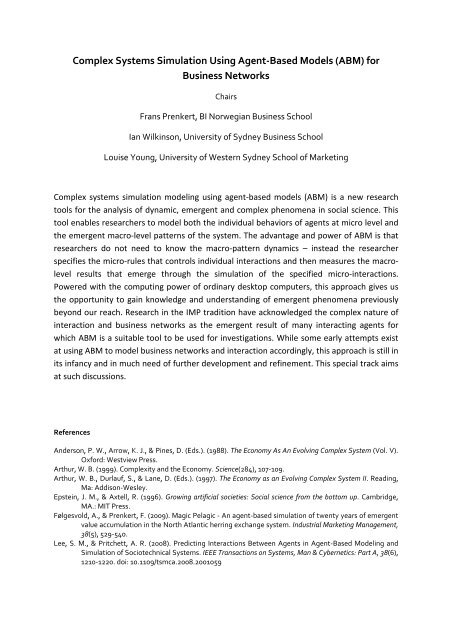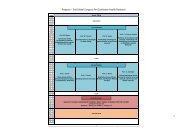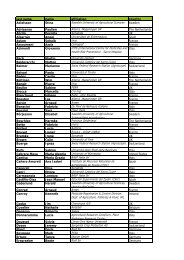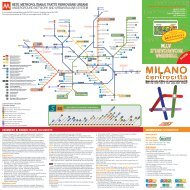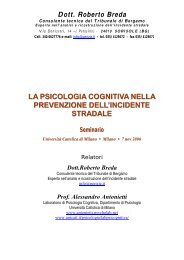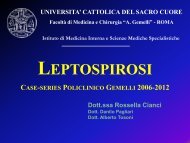Complex Systems Simulation Using Agent-Based Models (ABM) for ...
Complex Systems Simulation Using Agent-Based Models (ABM) for ...
Complex Systems Simulation Using Agent-Based Models (ABM) for ...
Create successful ePaper yourself
Turn your PDF publications into a flip-book with our unique Google optimized e-Paper software.
<strong>Complex</strong> <strong>Systems</strong> <strong>Simulation</strong> <strong>Using</strong> <strong>Agent</strong>-<strong>Based</strong> <strong>Models</strong> (<strong>ABM</strong>) <strong>for</strong><br />
Business Networks<br />
Chairs<br />
Frans Prenkert, BI Norwegian Business School<br />
Ian Wilkinson, University of Sydney Business School<br />
Louise Young, University of Western Sydney School of Marketing<br />
<strong>Complex</strong> systems simulation modeling using agent-based models (<strong>ABM</strong>) is a new research<br />
tools <strong>for</strong> the analysis of dynamic, emergent and complex phenomena in social science. This<br />
tool enables researchers to model both the individual behaviors of agents at micro level and<br />
the emergent macro-level patterns of the system. The advantage and power of <strong>ABM</strong> is that<br />
researchers do not need to know the macro-pattern dynamics – instead the researcher<br />
specifies the micro-rules that controls individual interactions and then measures the macrolevel<br />
results that emerge through the simulation of the specified micro-interactions.<br />
Powered with the computing power of ordinary desktop computers, this approach gives us<br />
the opportunity to gain knowledge and understanding of emergent phenomena previously<br />
beyond our reach. Research in the IMP tradition have acknowledged the complex nature of<br />
interaction and business networks as the emergent result of many interacting agents <strong>for</strong><br />
which <strong>ABM</strong> is a suitable tool to be used <strong>for</strong> investigations. While some early attempts exist<br />
at using <strong>ABM</strong> to model business networks and interaction accordingly, this approach is still in<br />
its infancy and in much need of further development and refinement. This special track aims<br />
at such discussions.<br />
References<br />
Anderson, P. W., Arrow, K. J., & Pines, D. (Eds.). (1988). The Economy As An Evolving <strong>Complex</strong> System (Vol. V).<br />
Ox<strong>for</strong>d: Westview Press.<br />
Arthur, W. B. (1999). <strong>Complex</strong>ity and the Economy. Science(284), 107-109.<br />
Arthur, W. B., Durlauf, S., & Lane, D. (Eds.). (1997). The Economy as an Evolving <strong>Complex</strong> System II. Reading,<br />
Ma: Addison-Wesley.<br />
Epstein, J. M., & Axtell, R. (1996). Growing artificial societies: Social science from the bottom up. Cambridge,<br />
MA.: MIT Press.<br />
Følgesvold, A., & Prenkert, F. (2009). Magic Pelagic - An agent-based simulation of twenty years of emergent<br />
value accumulation in the North Atlantic herring exchange system. Industrial Marketing Management,<br />
38(5), 529-540.<br />
Lee, S. M., & Pritchett, A. R. (2008). Predicting Interactions Between <strong>Agent</strong>s in <strong>Agent</strong>-<strong>Based</strong> Modeling and<br />
<strong>Simulation</strong> of Sociotechnical <strong>Systems</strong>. IEEE Transactions on <strong>Systems</strong>, Man & Cybernetics: Part A, 38(6),<br />
1210-1220. doi: 10.1109/tsmca.2008.2001059
Olaru, D., Denize, S., & Purchase, S. L. (2009). Alternative ways of verification and validation of computational<br />
models: A case of replication in the innovation networks. Paper presented at the The 25th annual IMPconference,<br />
Marseille, France.<br />
Purchase, S. L., Olaru, D., & Denize, S. (2008). Exploring innovation networks: two simulations, two perspectives<br />
and the mechanisms that drive innovation per<strong>for</strong>mance. Paper presented at the the 24th annual IMPconference,<br />
Uppsala, Sweden.<br />
Wilkinson, I., Held, F., Marks, R., & Young, L. (2011). Developing <strong>Agent</strong>-<strong>Based</strong> <strong>Models</strong> of Business Relations<br />
and Networks Networks in Society: Links and Language. Singapore: Pan Stan<strong>for</strong>d.<br />
Wilkinson, I., & Young, L. (2003). A view from the edge. Marketing Theory, 3(1), 179.<br />
Wilkinson, I. F. (2008). Business Relating Business: Managing Organisational Relations and Networks.<br />
Cheltenham: Edvard Elgar.<br />
For more in<strong>for</strong>mation contact the track chairs:<br />
Frans Prenkert frans.prenkert@bi.no<br />
Ian Wilkinson<br />
Louise Young<br />
ian.wilkinson@sydney.edu.au<br />
louise.young@uws.edu.au


